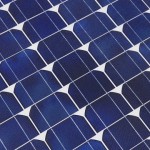Willoughby Smith and photo conductivity of selenium
On July 17, 1891, English electrical engineer, Willoughby Smith died in East Bourne, Sussex. He discovered the photo conductivity of the element selenium. This discovery later led to the invention of photoelectric cells. Selenium is as a fundamental component in CIGS thin film Solar panels. ‘CIGS’ stands for copper, indium, gallium, and selenium.
Smith was born in Great Yarmouth, Norfolk England on April 6, 1828. In 1848, began working for the Gutta Percha Company, London where he developed iron and copper wires insulated with gutta-percha to be used for telegraph wires.
Over the next 30 years, Smith over saw the manufacture and laying of many underwater cables for the Gutta Percha Company. During that time, he realized he needed a method for continually testing an underwater cable being laid, such as a semi-conducting material with a high resistance.
In 1873, he selected selenium rods for his test circuit. While selenium seemed the solution in the lab, in actual use it gave inconsistent results. Upon further investigation, he discovered the conductivity of the selenium rods decreased significantly when exposed to strong light.
Smith’s article, “Effect of Light on Selenium during the passage of an Electric Current,” was published in the 20 February 1873 issue of Nature. This discovery of selenium’s photoelectric properties lead to the development of photoelectric cells, including those used in the earliest television systems and later in thin film CIGS solar.
Several renewable energy companies are trying to make CIGS solar cheaper than the incumbent technology of silicon solar cells. The U.S. National Renewable Energy Laboratory has confirmed 13.8% efficiency of MiaSolé’s large-area (meter-square) production panels, while Fraunhofer ISE said that Q-Cells’ subsidiary Solibro has hit 13% total-area (and 14.2% aperture-area) efficiency with its newly rebranded Q.SMART production module. SoloPower, in 2010 said that it had achieved 11 percent efficiency for its panels.






